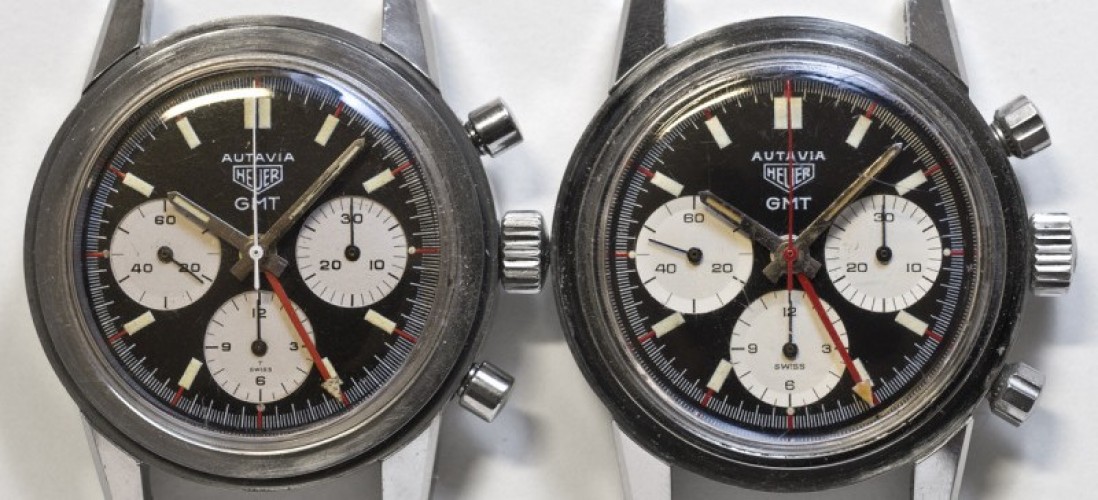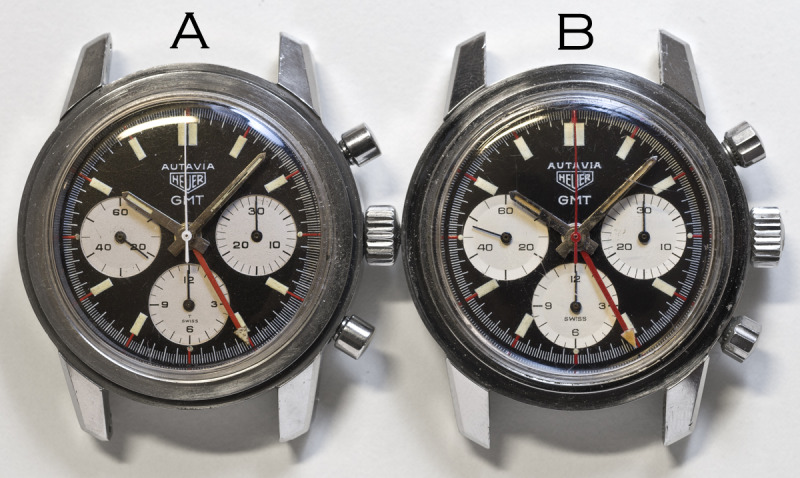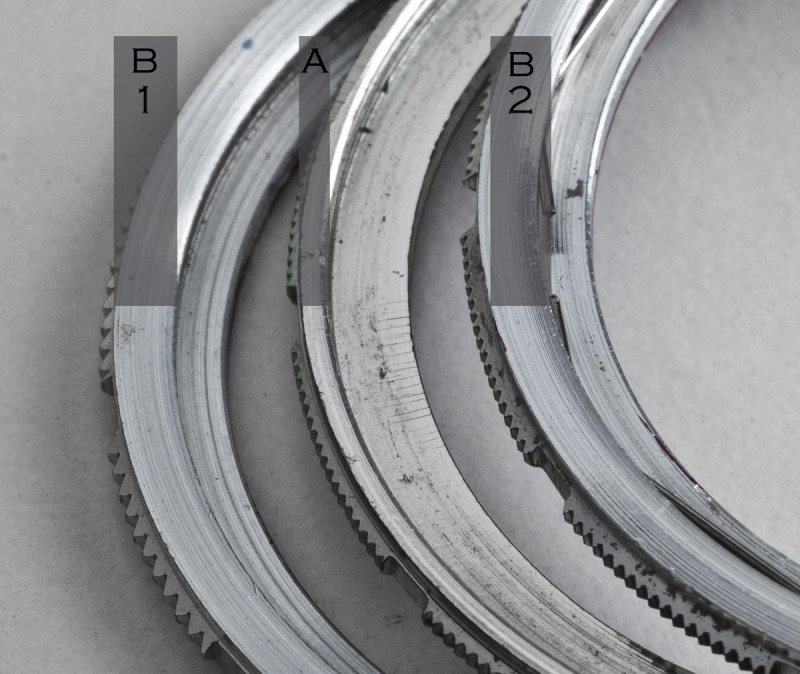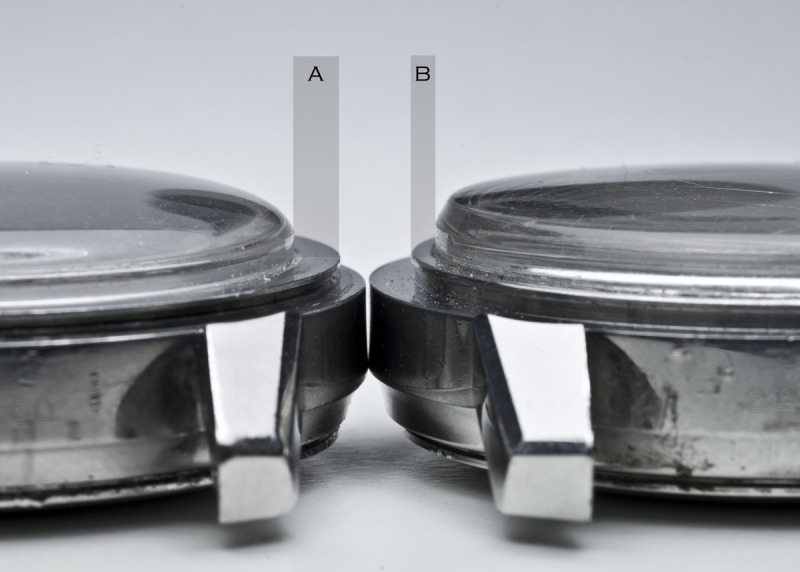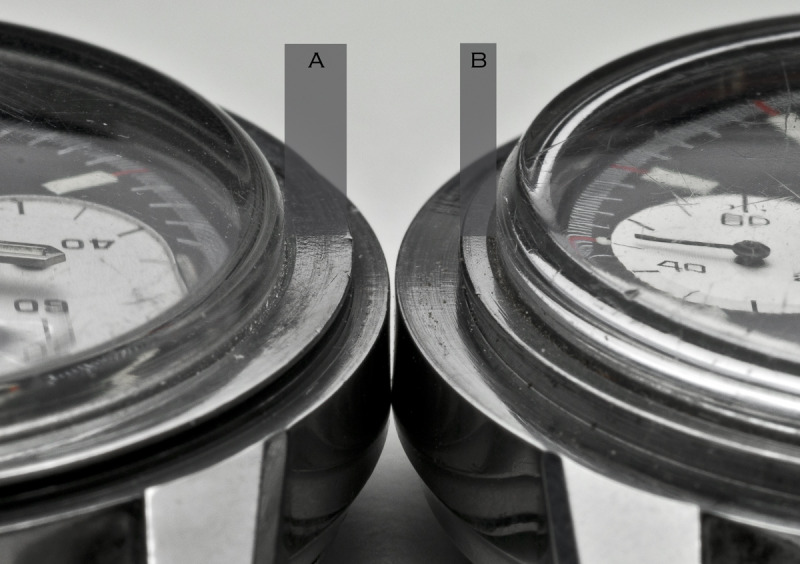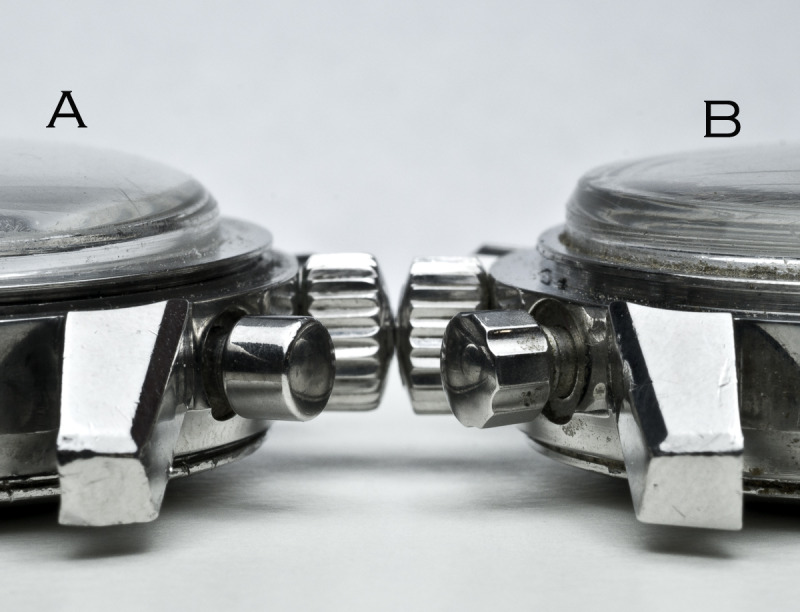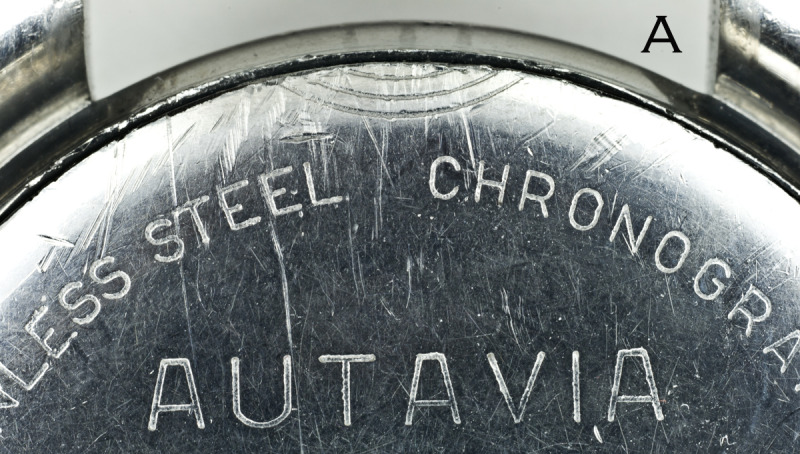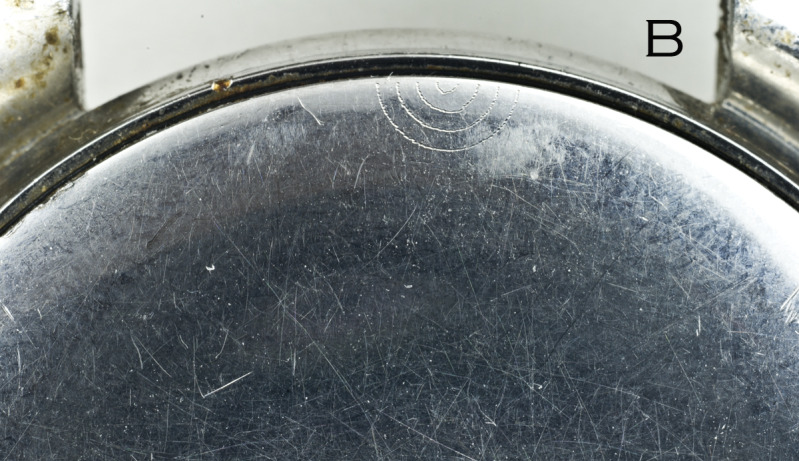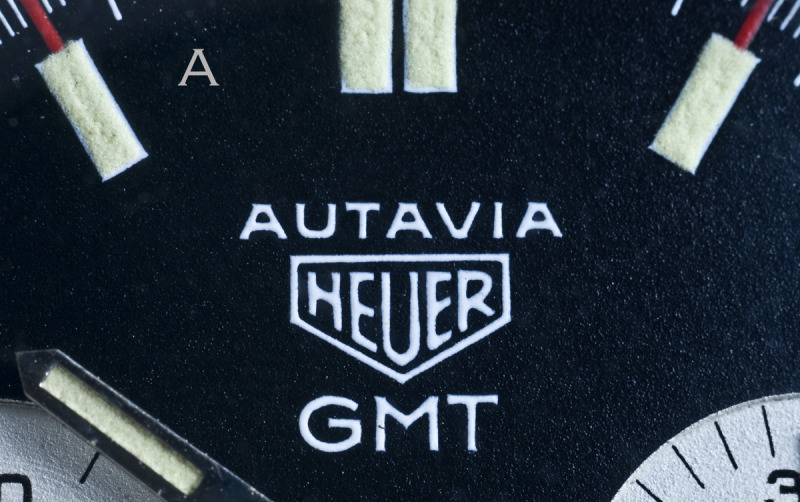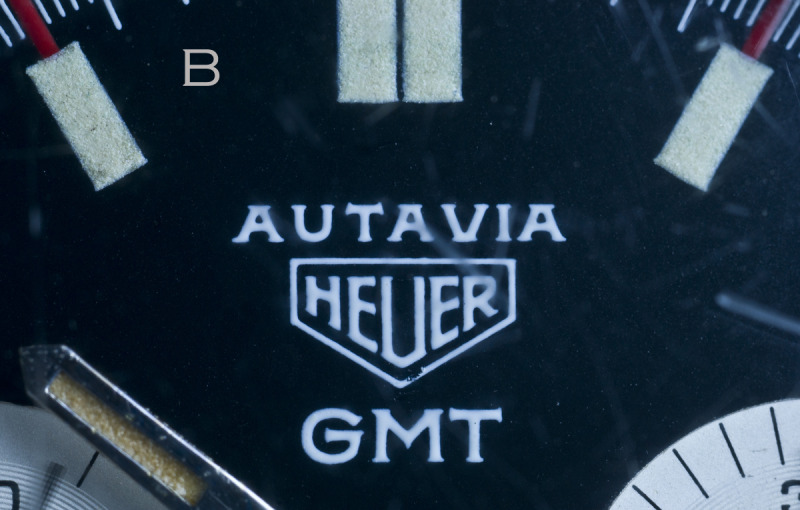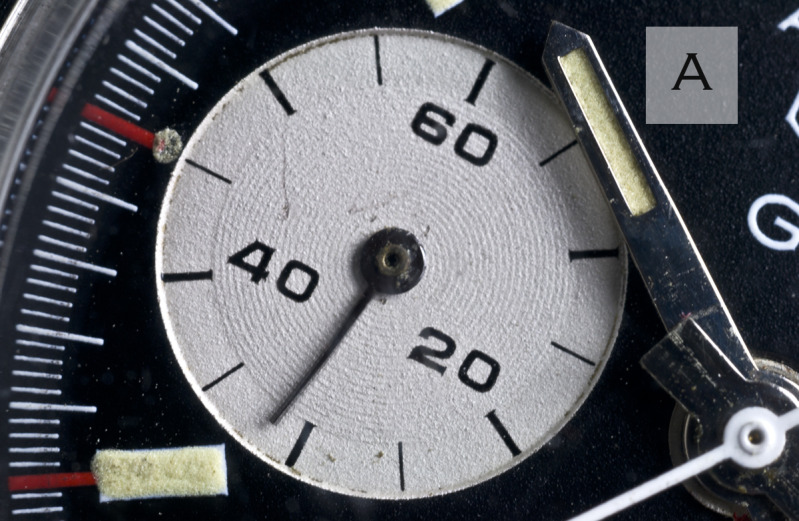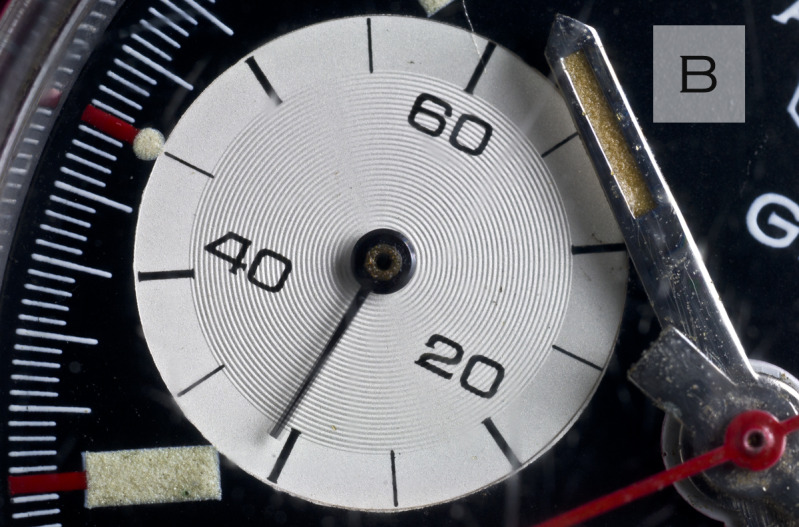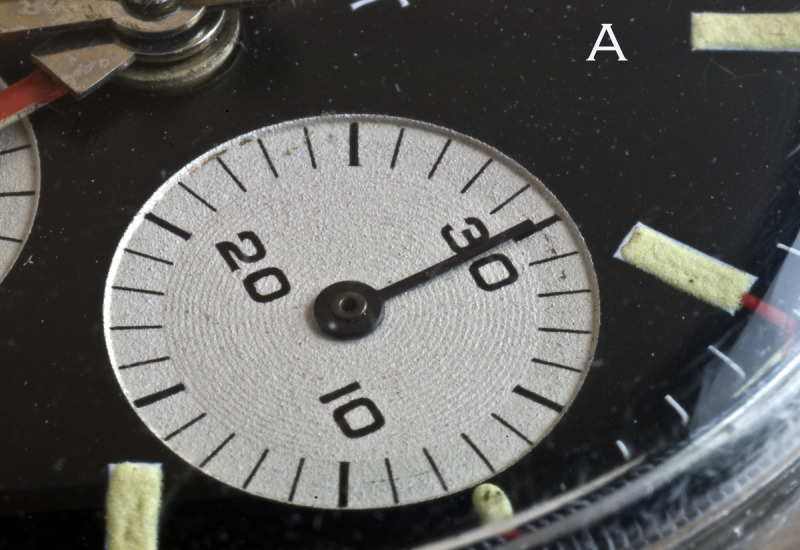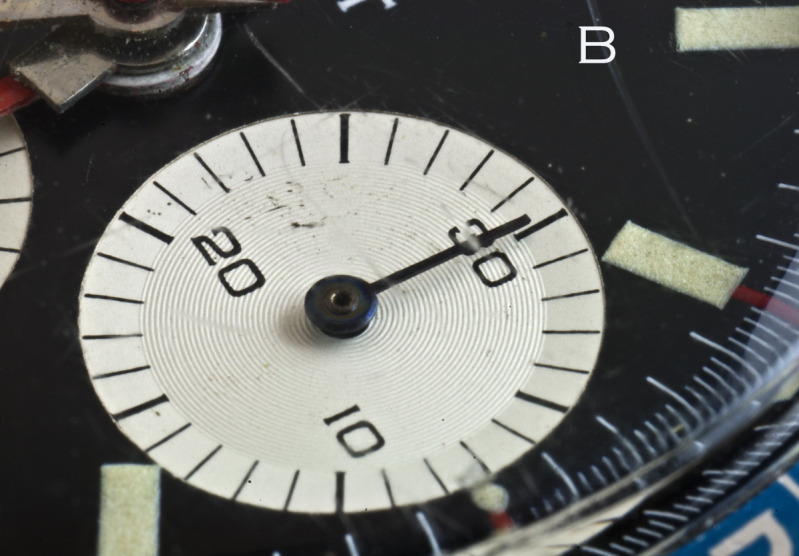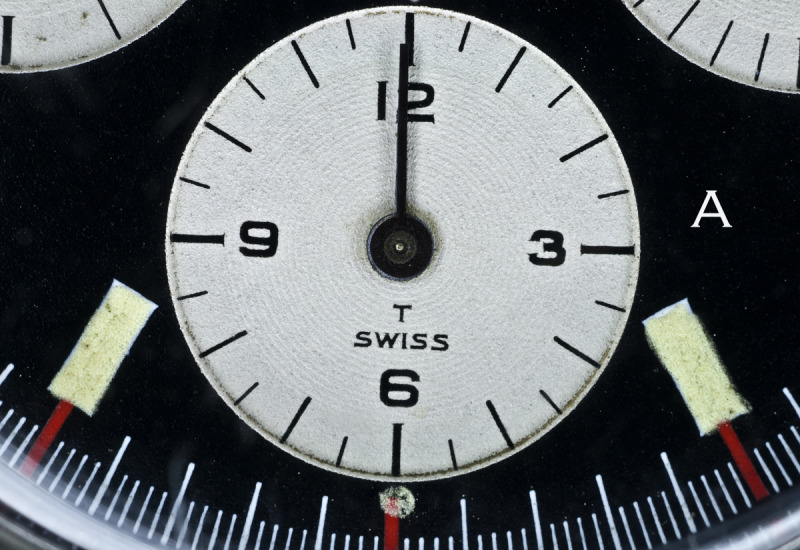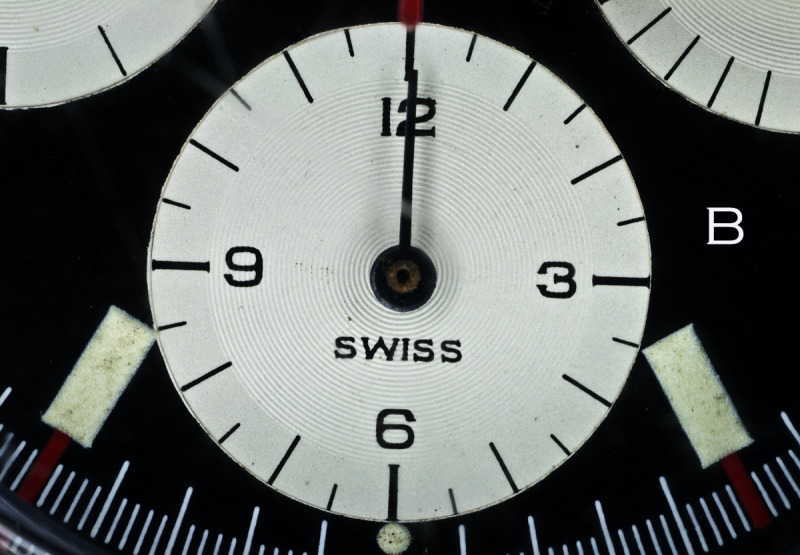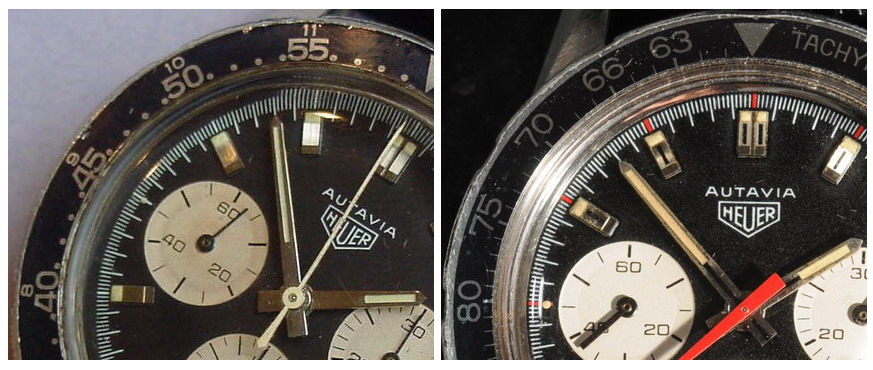Heuer made two executions of its Autavia Reference 2446C (compressor) snap-back case and although these cases may — at a glance — appear to be identical, upon closer inspection we see that they are very different in their construction. The differences between seemingly similar watches become even more numerous when the Autavia 2446C case houses the Autavia GMT chronograph, as Heuer used multiple varieties of dials and hands on the GMTs.
This posting is derived from a discussion forum posting by Paul Gavin, in which he shows us the 10 differences between two of these Autavia 2446C GMT chronographs. Huge thanks to Paul for this discussion forum posting, as well as his assistance in preserving it in the form of this blog posting.
[Please note that the two Autavia GMTs shown immediately below are file photos, and are not the two samples actually being shown and discussed in this posting.]
Overview of the Autavia 2446C GMT.
Heuer introduced its Autavia chronograph in 1962, with the first two executions of the chronograph being made with screw-back cases. The first version of the Autavia GMT was introduced around 1969, and used the second execution screw-back case. Shortly after the introduction of this first Autavia GMT, Heuer switched to a snap-back (compressor) case for the Autavias — Reference 2446C for the three register Auatvias — and soon the Autavia GMT was housed in this 2446C case. The Autavia Reference 2446C GMT was produced for several years, into the early 1970s, at which time the 2446C compressor case was replaced by the updated “1970s-style” case being used for the standard Autavias.
A Detailed Look at the Reference 2446C Autavias.
Looking at the two Autavia GMTs shown in the photographs below, Sample A is a very early example with serial number 1311xx (first execution 2446C case) and Sample B is a later example with serial number 1957xx (second execution 2446C case).
Paul has found 10 visible differences between these two Autavia GMTs (case and dial only). (Paul tells us that there is at least one more difference that is not visible unless you remove the case-back. This is from a reliable source and refers to the gasket, which is different for the two watches. If anyone has any pictures to share, we would be happy to add these photos.)
Many of the differences that Paul has observed in these Autavis GMTs are also applicable to standard (non-GMT) versions of the Autavia Reference 2446C. In the following discussion, we have noted the differences that are found in the Reference 2446C GMTs, as well as the differences that are found in the “standard” Reference 2446C Autavias (non-GMT).
A Preliminary Note on Changes in Executions — Cases, Dials, Hands, Pushers, Etc.
Watches are not like cars. In the world of automobiles, there are distinct “model years”, with cars being either entirely restyled or having minor modifications from one model year to the next. Ford restyled the Mustang for the 1971 model year, with significant changes in both the exterior and interior styling. While some systems and components may have carried over from one year to the next (for example, engines and transmissions), there is no mistaking the exterior panels and key interior elements (dashboard, console and seats, for example). And when components were changed during the model year (for example, the introduction of the 351 Cobra Jet engine late in the 1971 model year), these changes were well-documented so that today’s collector is able to use serial numbers and other available information to determine which elements are “correct” for a particular car.
It is different in the world of vintage watches. While we see different executions of models like the Autavia or Carrera over the years (for example, in the Autavia, the first execution screw-back case, the second execution screw-back case, and the first execution snap-back case), there were no distinct model years, and major elements of a model were not necessarily switched over all at the same time. In this posting, we refer to “earlier” and “later” executions of major components such as cases, dials, markers, hands and pushers, but watch manufacturers did not move from one execution of these elements to the next execution of these elements, all at the same time. For example, when Heuer switched to the second execution of its screw-back case (around 1965) or the second generation of its snap-back case (around 1970), in each instance dials and hands may have been carried over from the first generation.
So while we can trace the changes in each major component — case, dial, hands, pushers, etc. — and establish which elements were earlier and which were later, there may be multiple “transitional” models between a watch that is identified as a first generation model and a watch that is identified as a second generation model. It may be difficult (or impossible) to examine a particular watch and know which elements were in place when it left the factory. There were no bright lines between “model years” or between versions of the models, as the watch companies often seem to have used up their supplies of components before they began to use the newly designed elements. We know where a model such as the Autavia 2446C GMT started (early case, smaller registers, plain hands and smooth pushers) and we know where it ended up (later case, larger registers, red accents on hands and fluted pushers), but it is difficult to catalog the steps from one execution to the other.
Accordingly, as we discuss the Reference 2446C Autavias — both standard and GMT — we can identify which components are earlier and which are later, but it is difficult to be certain about the specifications for a particular execution or to determine the exact components that would have been found in a particular watch when it left the factory. We can divide different models into Mark 1, Mark 2, Mark 3, etc., but in most instances, for the vintage Heuers these demarcations are not definitive.
Difference No. 1 – Bezel (2446C GMT and standard 2446C)
Overview. The design and construction of the bezel, holding spring and flange (the part of the case to which the bezel is attached) are entirely different for the two executions of the Reference 2446C case. A bezel from a first execution case will not fit on a second execution case, and a bezel from a second execution case will not fit on a first execution case . . . period. Let’s explain what this is all about.
The Autavia 2446C case was originally designed with the idea that the bezel would be permanently attached to the case (i.e., owners and even their watchmakers could not easily switch out the bezels). The construction of the bezel and its holding spring made it very difficult to remove and replace the bezel . . . at least for those not skilled in the task. Over time, many customers requested that the bezel be replaced (for example, choosing to replace a Tachymeter bezel with a Minute / Hours bezel or replacing a bezel that had gotten scratched and beaten up), and many of the bezels on the first execution Autavia cases were destroyed when inexperienced watchmakers (or watch-owners) attempted the replacement. Accordingly, Heuer changed the construction of the bezel from the first execution case to the second execution case so that it would be much easier to replace the bezel. (It’s worth noting that there is no “insert” in these bezels; the bezel is a single piece of aluminum.)
The Bezels and Holding Springs. In order to make the replacement of the bezel much easier, Heuer redesigned the bezel and holding spring, and thus the second execution Autavia 2446C case was born. The photo below shows a first execution bezel (A), between two of the second execution bezels (B1 and B2). You notice immediately that the rim around edge of the bezel is thinner (narrower) on the first execution case (A) and wider (broader) on the second execution case (B). This change in thickness of the outer rim was required because Heuer changed the construction of the holding spring.
Case and Flange. As you can see from the photos below, the first execution case (sample A) has a larger diameter flange (bezel ring) than sample B, which is consistent with the fact that the internal diameter of the bezel is greater for the first execution case (sample A) than it is for the second execution case (sample B). As shown in the photo above, the rim around the edge of the bezel is correspondingly thinner on the first execution case (sample A), so that the total outer-edge-to-outer-edge diameter of the two bezels are the same.
Both the first execution case and the second execution case use the same sized crystal.
The Teeth on the Bezel (Knurling). Notice in the photo below that the sample on the left has a smaller number of bigger teeth (say, 11 teeth per hour increment), whereas the two samples (center and right) both have a larger number of smaller teeth (say, 18 teeth per hour increment). It appears that all bezels for the first execution case have the smaller teeth, while bezels for the second execution case may have either smaller or bigger teeth.
We offer two explanations of why Heuer made this change in the teeth at the edge of the bezel. One explanation is that the bigger teeth provide more “grip” in the user’s hand, making it easier to turn the bezel. Another explanation is that this was simply a change by one of Heuer’s case manufacturers, without any purpose for the change.
Difference No. 2 – Pushers (2446C GMT and standard 2446C)
We can clearly see the difference in the pushers (smooth on the first execution case versus fluted on the second execution case), but it is also interesting to note how the case has been machined to accommodate the pushers.
Difference No. 3 – Case Back (2446C GMT and standard 2446C)
The first execution case (A) has an engraved case back and the second execution case has a completely plain back with no engraving. There are circles engraved at the outer edge (placed there to indicate where the case-opening tool is to be inserted) of both cases, but the shapes of the arcs are different.
Difference No. 4 – Dial Print — The Words Autavia, Heuer and GMT (2446C GMT)
The early execution (A) has a finer print and less serif than the later dial (B).
Difference No. 5 – Dial — Finish (2446C GMT)
Also visible in the picture above is the matte finish on the earlier dial (A) and smooth finish on the later dial (B).
Difference No. 6 – Sub Registers — Size (2446C GMT)
Early version (A) has smaller sub registers, while later version (B) has larger sub registers. It is easiest to distinguish between the sizes of the registers by comparing the space between the registers and the hour markers, as well as the space between the registers.
Difference No. 7 – Sub-Registers — Construction (2446C GMT)
The early execution (A) has sunken registers which are almost flat. The circular ridges are less defined and the print is slightly heavier. On the later dial (B), there is a smooth, sloping bevel to the inner circular ridges and the printing is finer.
Differences No. 8 and 9 – Red stripe and luminescent hour markers (2446C GMT)
Also visible in the first set of pictures above and the set below is a very slight difference in the dimension of the rectangular luminous hour marker and the length and width of the red stripes. Maybe a bit pedantic but the Rolex guys will be impressed.
Difference No. 10 – “T” and no “T” on the hour register (2446C GMT)
The early execution dial (A) has the small “T” on the hour register above a small “Swiss” and the majority of the later execution dials (like our example B) have no “T” on the dial and a larger “Swiss”. The “T” was required for some period, to indicate that there was Tritium luminous material on the dial. Perhaps this requirement was no longer applicable by the time the later dials were produced.
That’s it from Paul. I hope you found the discussion of these differences interesting. I sure learned something by really looking at the details of which there are many contained in each of these amazing pieces.
Paul Gavin
April 29, 2012
But Wait, There’s One More Difference in the GMTs that We Must Mention — The Hands
While Paul’s discussion of the bezels, cases, pushers and dials points out some subtle (but important) differences between earlier and later executions of the Autavia 2446C GMT chronographs, the image below shows the most obvious difference between some earlier and later samples — the hands.
Earlier hands (sample on the left) were polished steel, with luminous inserts (distal). Later hands (sample on the right) were polished steel, with luminous inserts (distal) and red inserts (proximal), with the tips painted red. It appears that this style of hand, with the red inserts and tips, was first used for the 2446C GMTs at around serial number 196 xxx, was then used for the automatic 1163 Autavia GMTs at around serial number 203 xxx (with brushed steel), and was then used for the high-production 1163 V (Viceroy) Autavias beginning at around serial number 224 xxx (with brushed steel). Thus this distinctive style of hand — with the red inserts and tips — had its origins in the Autavia 2446C GMTs and was later “popularized” in the Viceroys.
And Finally, There’s One More Difference in the “Standard” 2446C Autavias that we Must Mention — The Dials and Hands
This posting has focused on the differences between the elements of the Autavia 2446C GMTs, but while we are on the subject of the 2446Cs, we should point out two key differences between the earlier and later versions of the “standard” 2446C Autavias. In the early version, the dial has applied steel markers and polished steel hands (with luminous inserts). In the later version, the applied steel markers on the dial and the hands both have black inserts. This follows a prevailing pattern for the Heuers of this era, that the style of the hands generally matches the style of the markers, in terms of width and inserts.
Thanks to Paul Gavin for the discussion forum message and photos that have formed the basis for this posting. The Autavia 2446C and Autavia 2446C GMT are iconic models in the line-up of vintage Heuer chronographs, all the more so when we can confirm that a specific sample is “correct”.
Jeff Stein
July 8, 2012
